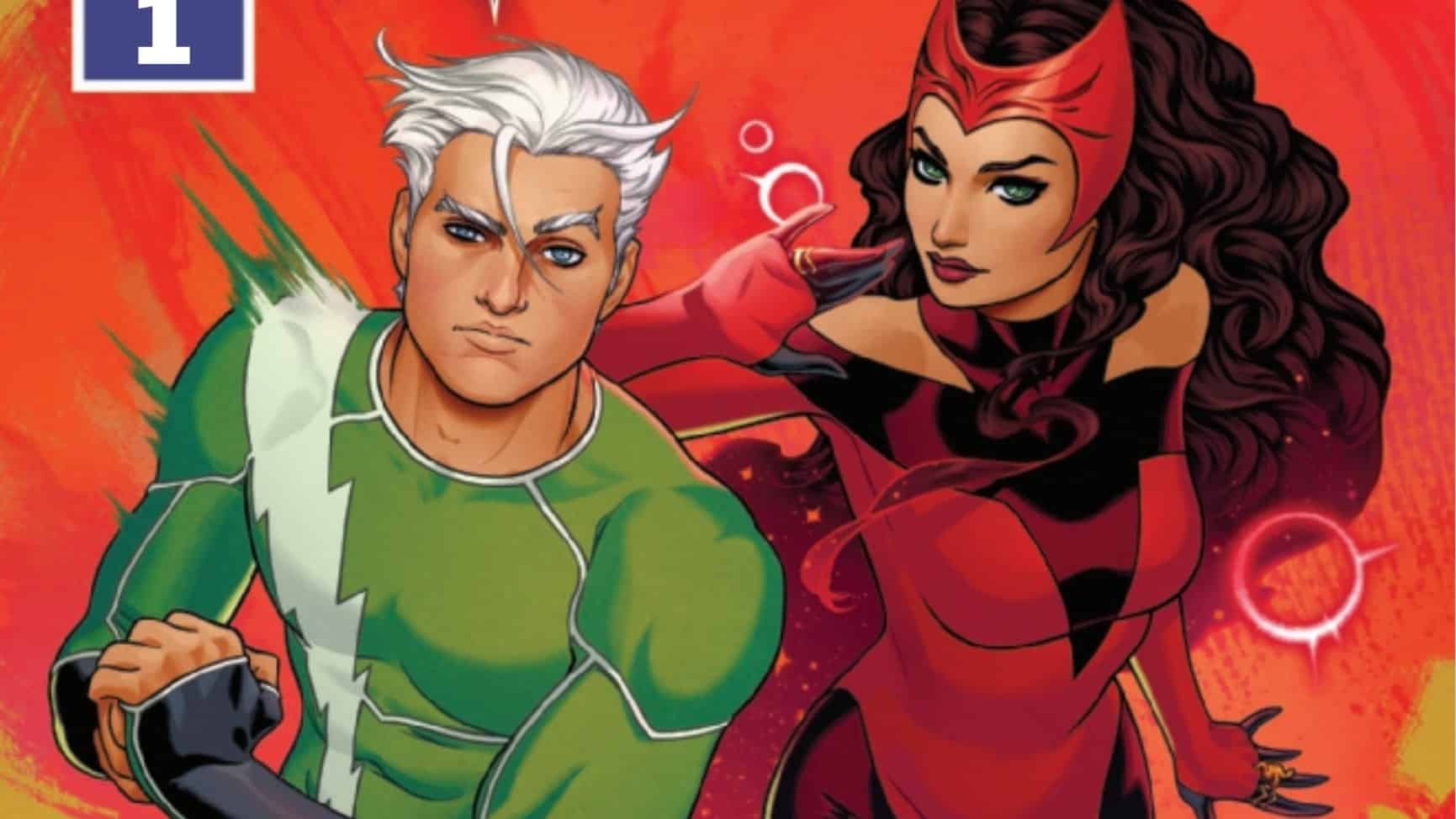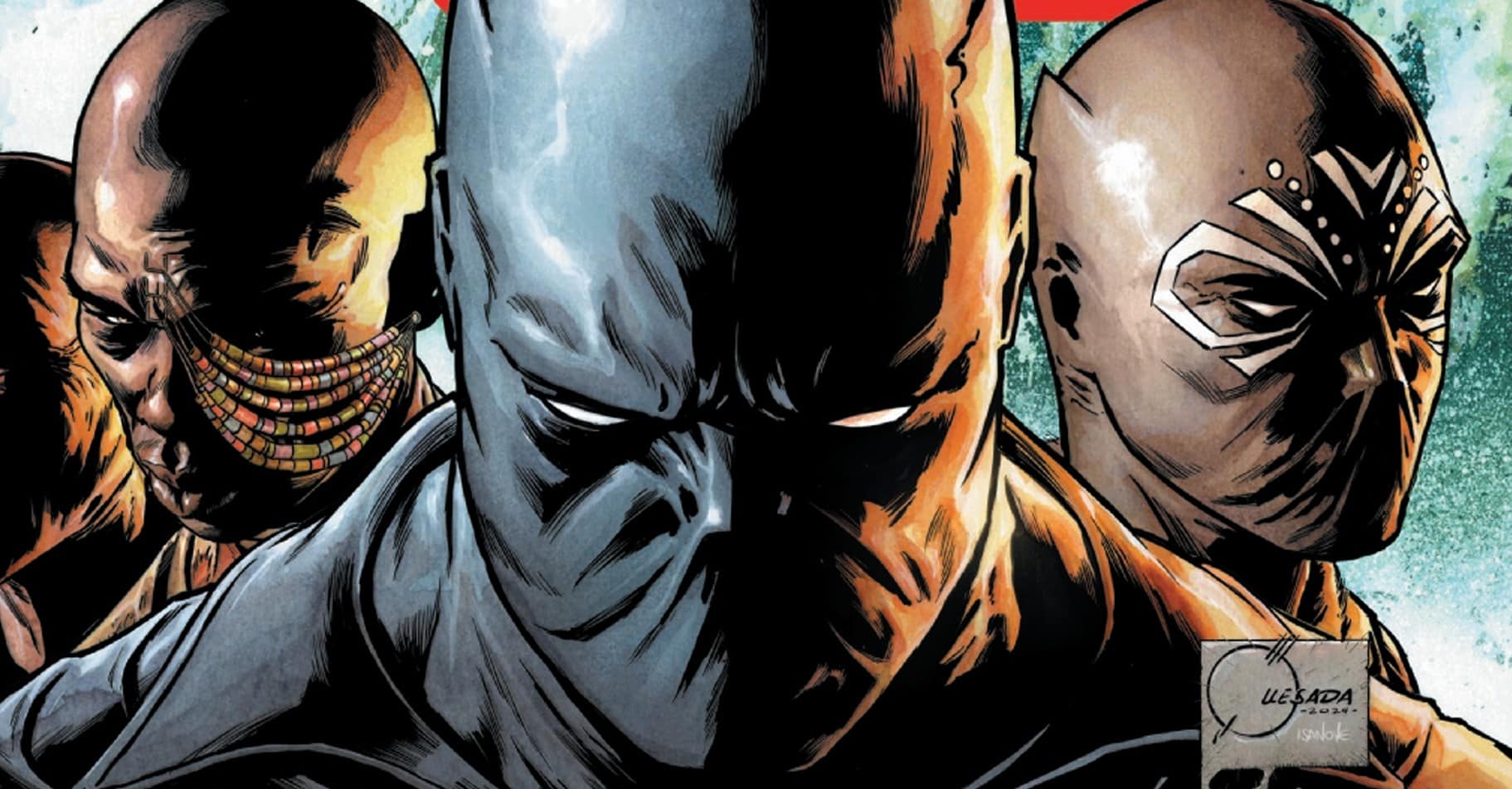The Scarlet Witch and Quicksilver have been heroes, friends, family heads and occasionally villains, but, above all, they are twins who look out for each other. So when Wanda receives a letter from the recently deceased Magneto that would upset Pietro, she burns it before her brother can read it. But her choice drives them apart at the worst possible time: A new threat heralded by the Wizard – with a horrifying eldritch upgrade – is coming for their heads, and if they can’t find a way to repair their damaged bond, it will cost them their lives. Scarlet Witch & Quicksilver #1 is written by Steve Orlando, drawn by Lorenzo Tammetta, colored by Frank William and lettered by Ariana Maher.
As far as paternal relationships go, for Scarlet Witch and Quicksilver it is in life as it is in death as it is in…. the liminal state somewhere between the two Magneto currently finds himself in.
Wanda and Pietro have both had their fair share of highs and reality-shattering lows with their father(?) over the years. He has always cast a heavy shadow, and the Maximoff twins have at various points during their character history defined themselves by their alignment with or opposition to the late Master of Magnetism.
Since his death on Arakko, the memory of Magneto has been ever-present for Wanda, who has been continually tested by grief. Not long after reconciling with Magneto at the Hellfire Gala, she had to exonerate him of her murder, only for him to die during Judgment Day. When we last left Wanda in the Scarlet Witch series, Magneto’s resurrected clone, Joseph, had sacrificed his life to protect her, a moment of possible wish fulfilment tarnished slightly by the fact he had already betrayed her. All in all, though, her time in her new home of Lotkill, New York, has been a healing and happy one.
Meanwhile, Quicksilver has been keeping himself busy finding romance and generally trying to avoid dealing with things. In his time in Uncanny Avengers, it was noted via caption box that he did not have the chance to reunite with Magneto before he died, but he didn’t mention it once during the series. This is ultimately Quicksilver’s essence: never slowing down means never having to experience the pain.
Family Feud

Scarlet Witch and Quicksilver #1, for all intents and purposes, sees Pietro join his sister’s story. The creative team from last year’s Scarlet Witch solo series is retained, and Wanda remains in the lead role. She handles the lion’s share of internality and plot, which is also a neat reflection of the power dynamic between the twins.
Steve Orlando uses the twins’ contrasting experiences of grief as the catalyst for the issue’s central conflict. When they receive a posthumous letter from Magneto, which Wanda immediately opens and disposes of, the mere mention of his name whips up a heady brew of grief, jealousy and insecurity. This act of kindness from Wanda, to protect her brother from the painful truth, establishes an immediate role reversal that lands a blow to Pietro’s ego. Wanda’s possession of this knowledge symbolizes the wider disparity between the two, and leaves Quicksilver feeling inferior. It reveals his envy over not just the closeness of Wanda’s bond with Magneto, but at their relative progress on the grief journey. Orlando also establishes an ironic gendered component to this argument that works well, with Pietro baulking at both needing protection from his sister and being accused of fearing emotional vulnerability. Tammetta’s art supports this brilliantly, with Quicksilver whizzing around, away and toward Wanda in rhythm with the dynamics of the argument. Unsurprisingly, the sibling spat reaches its crescendo when Pietro invokes House of M. Unprepared to lose the argument without landing a few blows himself, he projects his fear of facing his trauma onto Wanda, albeit unsuccessfully. This scene achieves its purpose of solidifying Wanda’s resilience, suggesting Pietro is the character whose emotional journey the story will focus on.
My one criticism of this scene is that the dialogue makes the mechanics of this argument very explicit. It doesn’t leave much to the imagination, and holds the reader’s hand a little too much, making it clunky. Darcy is used as an exposition enforcer in the scene immediately following it too, with cases of stating the obvious such as “I feel like that was about more than a burnt letter” and “People say a lot when they’re pissed off” adding unnecessary qualification.
Nevertheless, Orlando’s excellent characterization of Wanda throughout the Scarlet Witch series looks set to continue into this series. The post-argument monologue scene is the highlight of this first issue, with Tammetta’s use of body language combining with the emotionally dynamic dialogue to great effect. Wanda’s hands, as much as her face, carry the emotion of the scene. Her hands are her weapons, so when she unclenches her fist to point her finger accusingly or sweeps her hand in a circular or upward motion, the world shifts and morphs around her as she accidentally tears her shop apart. This scene is a brilliant exhibition of Wanda’s latent destructive potential. Her loss of control is uncharacteristic and hints at the ongoing need for repairs to be made, drawing a parallel between the shop and the twins’ relationship.
I couldn’t help but think of New Mutants #35 when reading this scene. Magneto in that issue describes “walking the path to redemption,” all too aware of the lack of instant fixes. So when Wanda instinctively tries to snap her fingers to rebuild the shop, Orlando and Tammetta make it clear that resolution must be earned. Where her solo series enabled her to achieve this largely on her own, she must now walk the road with her brother.
Pietro, meanwhile, has not slowed down enough to start the healing process. He’s running around the world at top speed, venting to himself as his argument takes on the same circular motion as his route. This scene perfectly encapsulates his state of mind as he runs past people he is close to without ever stopping, not ready to give or receive their support or affection. Orlando uses the simile of the stockade to encapsulate Pietro’s perception of dealing with his trauma: to be held in perpetuity humiliated, powerless and punished. Ironically, it is being so wrapped up in his own head that leads directly to his capture.
Parlour Tricks

The story’s central mystery is the identity of the letter’s sender and their motivations for sewing discord between Wanda and Pietro. The answer plays on the familiar trope of the unknown cosmic force and the herald, who turns out to be oft-maligned Fantastic Four villain the Wizard. The former failed stage magician has evidently been bestowed with a notable power upgrade and vague cosmic purpose, having seen “the truth at the end.” Orlando seems to be attempting to strike a balance between campy and sinister, but the Wizard’s motivations are a little too tropey to be taken seriously. For all his talk of the “grand design” in which Wanda’s chaos “simply can’t be allowed,” he still very much comes off as a man better suited to sleight of hand than world-shifting schemes. He lacks a history with either Wanda or Pietro, which in an issue concerned primarily with the past feels like a missed opportunity. His presence is largely functional, to inject the issue with action.
He proves to be a formidable physical threat though, and pushes Wanda to her limits, forcing her to reach into the Darkhold for power. Tammetta’s focus on Wanda’s hands pays off again here, as she chokes The Wizard with newly formed claws while Ariana Maher’s lettering accentuates that Wanda has relinquished some self-control to a force greater than her own. To this extent she is paralleled with the Wizard as potential vessels for a wider cosmic struggle. Bentley Wittman’s cosmic benefactor appears to be the key piece of this puzzle, and Wanda’s brief interaction with the angel in silhouette offers a few clues as to its origins.
Firstly, it is described as “endless” and rendering Wanda’s past good deeds as “pointless,” implying a sense of scale that transcends time and space. This immediately evokes the Dominion concept being explored through Rise of the Powers of X and, perhaps more pertinently, Resurrection of Magneto. Frank William’s coloring in the revelation scene provides further clues, with both the angel and the space it inhabits retaining the scarlet color palette used throughout the issue. This suggests that while its scale might make it unknowable, the source of this vision may not be entirely unfamiliar to Wanda.
When you consider what must have changed for a letter long consigned to Magneto’s bottom drawer to have been released, alongside his presence in the Waiting Room (the form of limbo created by Wanda) and the wider presence of the Enigma Dominion looming over mutantkind, everything feels too interconnected not to be related. This would give the series seismic significance in wider continuity, which would be something of a surprise. To be clear, I don’t believe the story needs this to be a success, just as it does not need to achieve a retcon of Wanda and Pietro’s parentage. The stakes established promise a lot, but as long as it remains true to its central characters’ emotional journeys, it has the potential to follow up on the success of the Scarlet Witch solo series.
Buy Scarlet Witch & Quicksilver #1 here. (Disclaimer: As an Amazon Associate, ComicsXF may earn from qualifying purchases.)
Dan Grote is the editor and publisher of ComicsXF, having won the site by ritual combat. By day, he’s a newspaper editor, and by night, he’s … also an editor. He co-hosts The ComicsXF Interview Podcast with Matt Lazorwitz. He lives in New Jersey with his wife, two kids and two miniature dachshunds, and his third, fictional son, Peter Paul Winston Wisdom. Follow him @danielpgrote.bsky.social.






